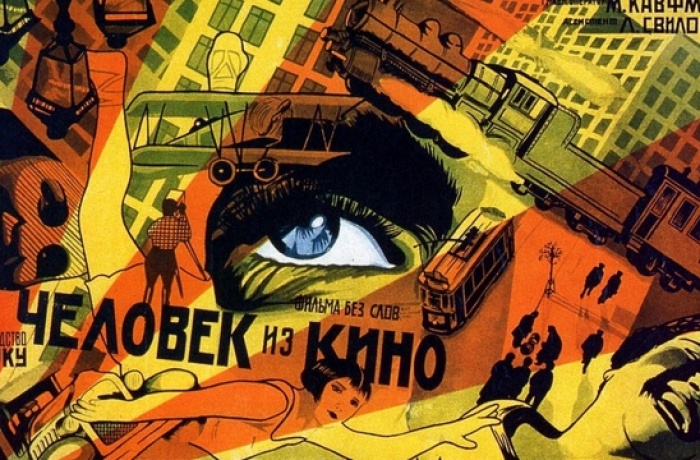
On August 1st at 00:01 AM Greenwich time, British Film Institute, the publisher of the oldest and the most authoritative film magazine Sight & Sound published the voting results for the best documentary ever. Of 200 critics and 100 filmmakers of the world having voted, 110 named the Ukrainian film A Man with a Movie Camera (1929) by Dziga Vertov the best, taking it to the top of the most respected film rating.
A Man with a Movie Camera is the second film by Dziga Vertov produced at the Odessa Film Factory VUFKU in cooperation with his talented brother and cinematographer Myhail Kaufman. Expelled from Sovkino, where he’d worked previously, Dziga Vertov was invited to Ukraine by VUFKU, that was more tolerant to artistic experiments no longer possible in Russia. The liberal policy of Soviet Ukrainian government in the early 1920s – as opposed to dogmatic and somewhat prescriptive Russian policy – actually increased immigration of film artists to Ukraine: Dziga Vertov, Myhail Kaufman, Mykola Shpykovskyi, Ivan Perestiani, Nikolai Okhlopkov, and Vladimir Mayakovskiy (who wrote three screenplays for the VUFKU) could continue their creative experiments here.
Ambiguously taken by critics and obscure for the general public, Vertov’s auto-reflective experiment would be soon deleted from the Soviet cinema history and long forgotten. A Man with a Movie Camera would then be rediscovered only in 1960s after its director’s death when filmmakers of the French Nouvelle Vague once again would return to appreciate his heritage.
Filmed in Odessa, Kyiv, and Kharkiv, this film is a book of methodology for documentary filmmakers and simultaneously a “film about a film” investigating the nature of indifferent fixation of reality. A Man with a Movie Camera, the manifesto of Vertov’s futuristic concept of a ‘filming eye’ is an example of an enormous editing experiment, a film symphony about the life of a Soviet metropolis abound with signs of famous Ukrainization Policy with its slogans, writings on the walls and banners.
A Man with a Movie Camera toped the Sight & Sound’s rating despite the fact that there were more than 1000 nominees – from the birth of filmmaking till nowadays, every fifth among which was made after the year 2000 – and thus it’s even more unbelievable, to see a silent film of 1929 gaining such recognition among the industry’s professionals.
The Sight & Sound magazine is the oldest cinema magazine in the world; it’s been published in the UK since 1932. Since 1952 every decade the magazine publishes ratings of the greatest feature films ever based on results of surveys taken globally among hundreds of filmmaking professionals. The last rating of 2012 Citizen Kane by Orson Wells (the leader of the last 50 years) was for the first time ousted by Alfred Hitchcock’s Vertigo. The same rating where fiction and documentary films were unseparated, A Man with a Movie Camera won the unprecedented 8th position among the best films ever, which inspired the BFI to found a separate rating for documentaries. The long list of 50 most prominent documentaries ever will be published in September issue of Sight & Sound that will be available in late August.